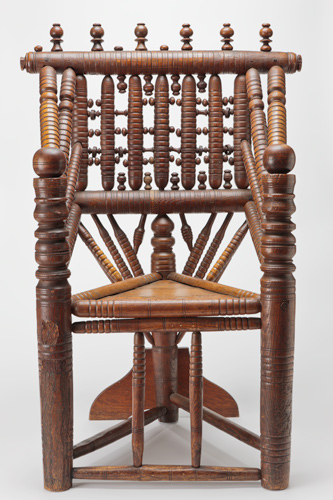It’s impossible to be on Harvard’s campus this month and not realize that Commencement is just around the corner. Even the Harvard Art Museums have been involved with preparations for the event. “The President’s Chair” (Turned Great Chair), which had been on view since November in the museums’ University Study Gallery, was de-installed last week in order to serve its traditional role as the seat of the Harvard president during Commencement exercises.
Though historians don’t know much about the chair’s origins, it has loomed large in Harvard history since it was purchased for the college by President Edward Holyoke (who served from 1737 to 1769). Believed to have been created in England or Wales in the 16th or 17th century, the unusual-looking “three-square turned chair” is made of European ash, with oak pommels added by Holyoke himself. It’s been used at every presidential installation since that of Samuel Locke in 1770, and a number of university presidents, starting with Holyoke, around 1760, have posed in it for their official oil portraits.
Initially, the chair was regarded as a piece of furniture for everyday use by the president. At some point later, when the chair was housed in the Harvard library, students reportedly made creative use of it. “According to tradition,” a 1903 New York Times article said, the chair “gave a student the right to kiss any young woman he was showing through the college and who thoughtlessly sat down in it.”
Today, the chair is on loan from the President and Fellows of Harvard College to the Harvard Art Museums, where it is kept in storage when not on display or in use at formal occasions. From any location, this chair continues to offer a front-row seat to history.



